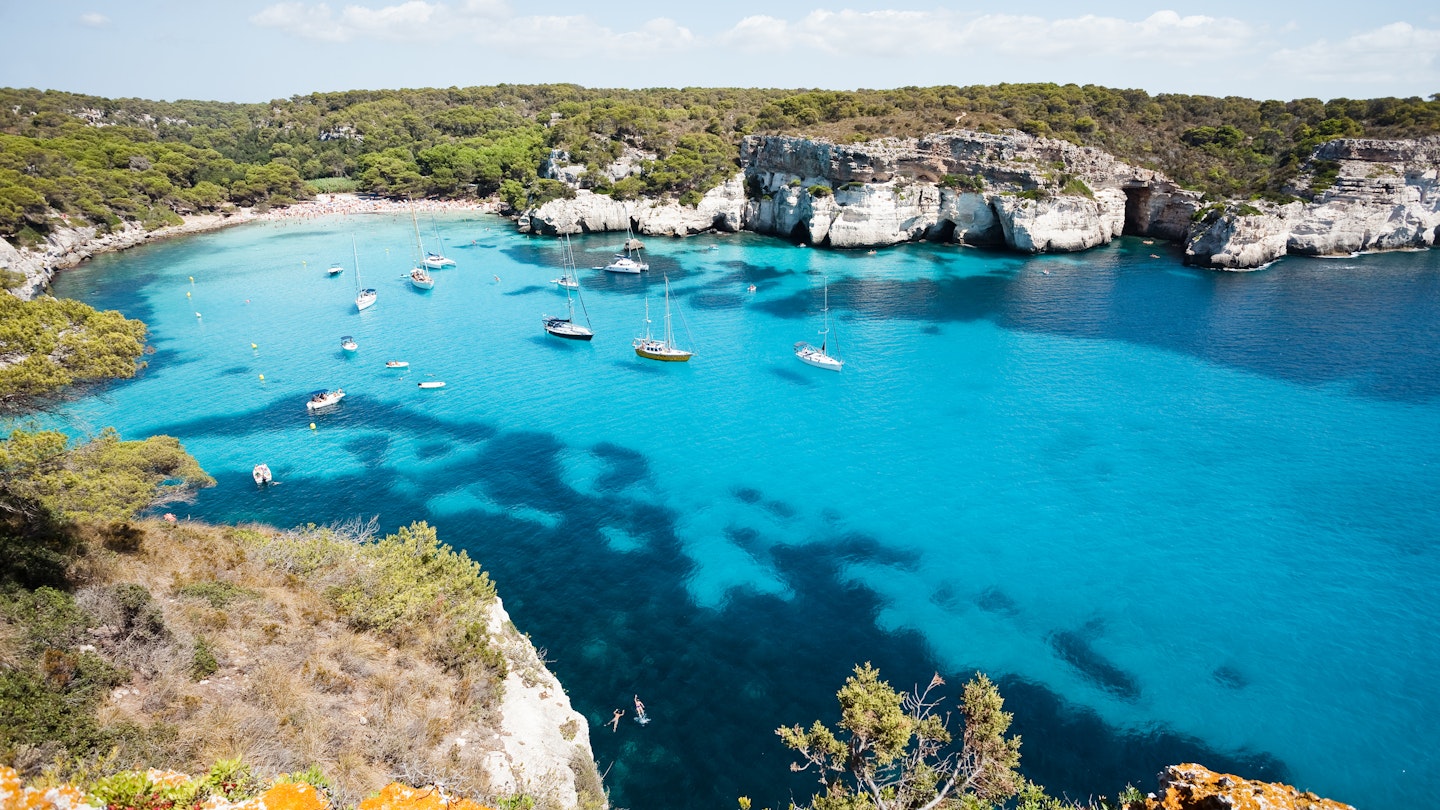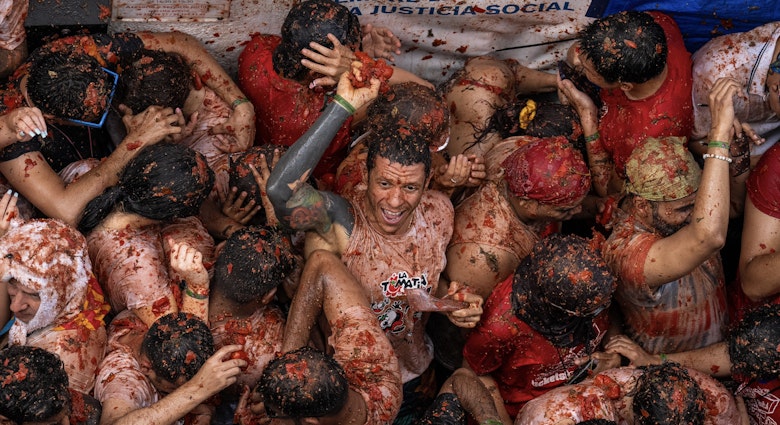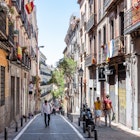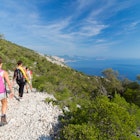Menorca, the easternmost of Spain’s sun-dappled Balearic Islands, moves to its own relaxed rhythm, and a fierce commitment to sustainability has always been at the core of the local tourism industry. Thanks to the early protection of its beautiful natural spaces, this unhurried, environmentally minded island remains a gentle vision of sparkly turquoise waves, of rippling countryside sprinkled with stone walls and ancient Talayotic monuments, of isolated lighthouses on wind-lashed capes, and of golden-white coves hidden down dusty pine-scented paths.
Having resisted the original wave of package tourism in Spain, Menorca has managed to balance its enormous tourism potential with safeguarding its wild environment and rich local traditions. The entire island has been a Unesco Biosphere Reserve since 1993 and around 42% of it is currently protected – things here feel galaxies away from dance-until-dawn Ibiza, boho-chic Formentera and always-popular Mallorca. Now, Menorca welcomes around 1.5 million tourists each year, compared to Mallorca’s 10 million or Ibiza’s 3.5 million.
In 2019, Menorca was recognised as a Top 100 sustainable destination by the international Green Destinations awards and named a Starlight Destination for its wonderfully clear, unpolluted skies.
Editor's note: travel situations are rapidly changing due to COVID-19. Always check travel restrictions before booking and be sure to follow government advice.
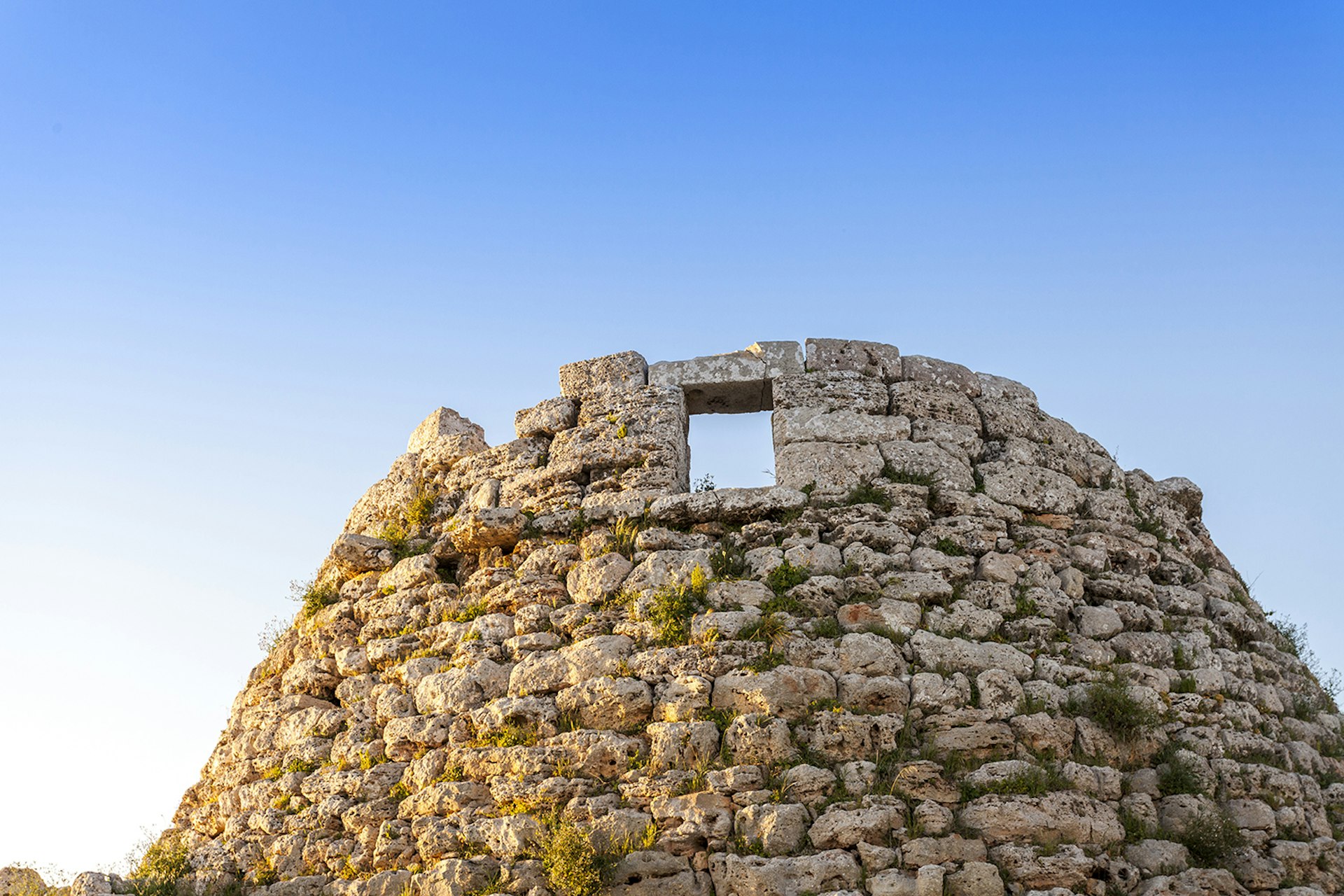
Menorca's history of sustainable tourism
While tourism was busy developing fast in neighboring Mallorca and Ibiza and pockets of mainland Spain from the 1950s, Menorca focused on its renowned dairy industry, and, with its spectacular natural harbour at Maó, remained a strategic military outpost. Menorca’s airport didn’t land until 1969, and mass tourism eventually began to trickle in throughout the 1970s and 1980s.
But even then, a passionate local movement spearheaded by the Grup Balear d’Ornitologia i Defensa de la Naturalesa (GOB) association ensured that the island’s most pristine natural spots escaped being developed. The Menorca Unesco Biosphere Reserve was established almost three decades ago, with the east coast’s 50-sq-km Parc Natural s’Albufera des Grau and its glinting freshwater lagoons at its heart.
And now, all these carefully protected, untouched corners are key to Menorca’s emergence as a sustainable travel destination. Looking to the future, the island has announced plans to abandon fossil fuels by 2030 and generate 85% of its energy from renewable sources, and is also campaigning for its Talayotic archaeological sites (such as the Naveta d’es Tudons) to be awarded Unesco World Heritage status.
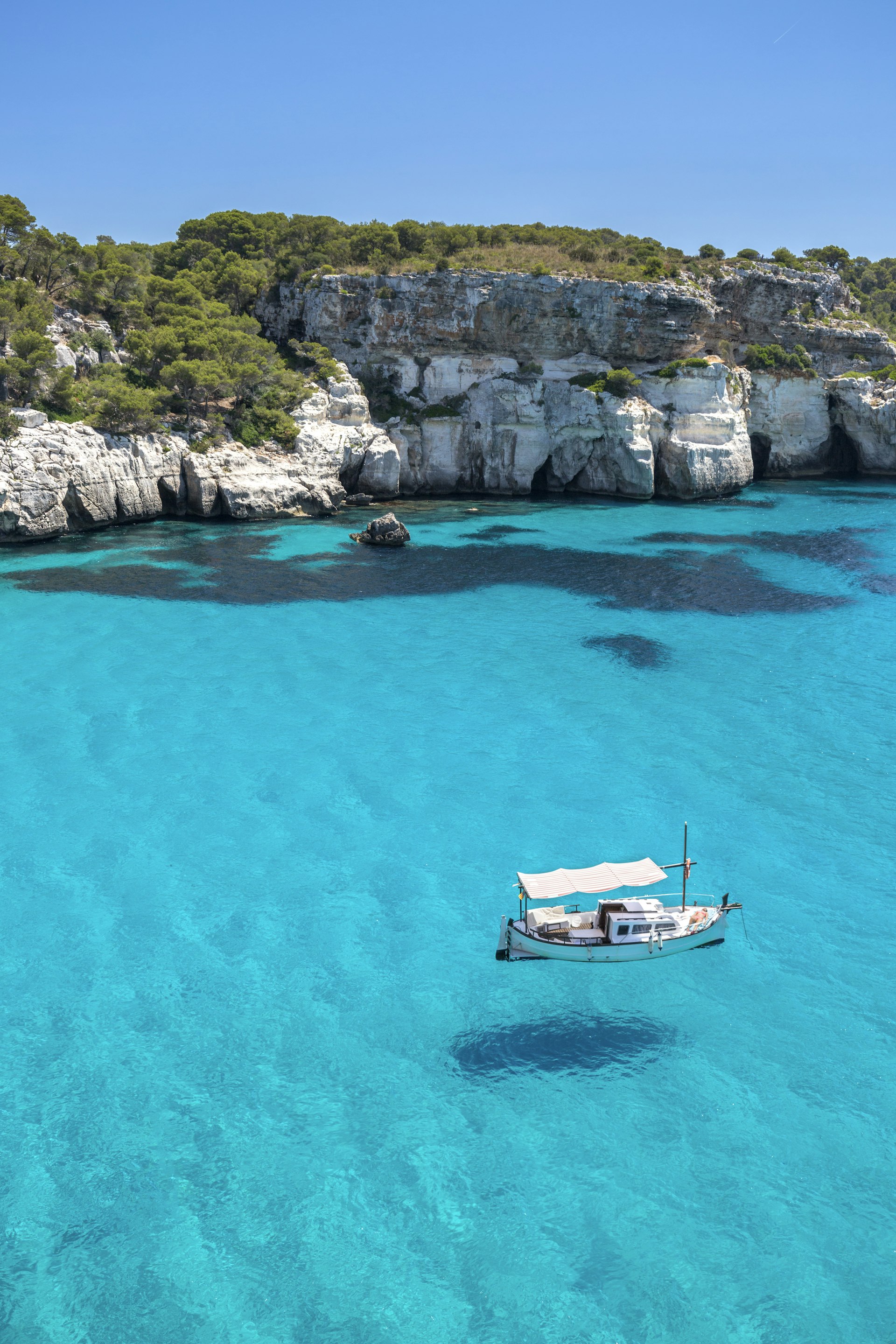
Protected coastline
Menorca’s 216km coastline conceals over 100 dazzling beaches, from the sparkling-white pine-fringed cales (coves) hugging the southern coast to the red-sand wonders dotted along the northern shores. Some, like the relaxed southern resorts of Cala Galdana and Son Bou, are easily accessed, but many of Menorca’s most beautiful strands are (deliberately) reachable only on foot, which keeps visitors down and protects the coastal environment. On the south coast, Mitjana, Macarella, en Turqueta and Talaier are postcard-worthy favorites. In northern Menorca, hike to the dune-backed Pregonda and Algaiarens coves and the twin golden-red Cavalleria beaches.
Over in eastern Menorca is the awe-inspiring 5km Maó natural harbor, which European powers have warred over for centuries. A boat trip along it (try long-running Yellow Catamarans) is a crash course in Menorcan history: passing handsome mansions, quiet docks and Es Castell harbour to reach the 18th-century British-built Fort de Marlborough and the formidable Fortalesa de La Mola, a 19th-century Spanish creation.
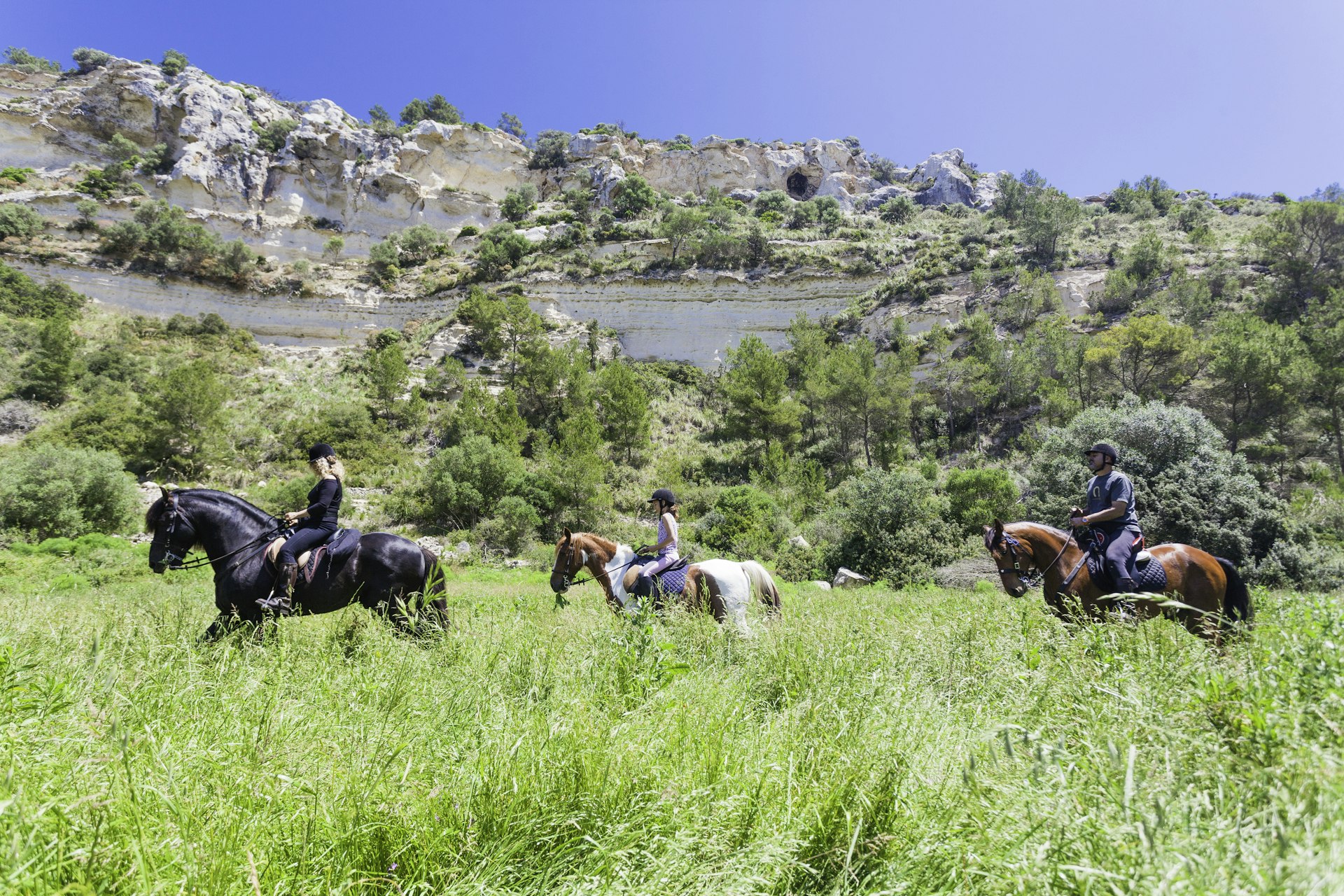
The Camí de Cavalls
Most of Menorca’s beaches are linked by the centuries-old Camí de Cavalls (officially the GR223), a historical 185km path that loops right around the island. The trail is thought to date, in one shape or another, since around the 14th century, and by popular local demand has been restored for hiking, horseback-riding and mountain-biking. You can walk the full thing in around a week – or just wander until you hit some of the Balearics’ most secluded coves. Along the east coast, the route swings through the magical wetlands of the Parc Natural s’Albufera des Grau, which is also great for kayaking, paddleboarding or birdwatching.

Marvelous Menorcan gastronomy
Fired by fabulous local produce, super-fresh ingredients and unpretentious preparations that let Balearic flavors sing, Menorca’s increasingly exciting food scene is a cornerstone of its sustainable ethos – and the island has recently been named European Region of Gastronomy for 2022.
Classic Menorca specialities include steaming caldereta de llagosta (lobster stew), salty Mahón cheese, spiced sobrasada and botifarra sausages, oliagua (a light vegetable-and-oil soup, served chilled in summer), and, of course, mayonnaise (said to have been invented on the island), along with all kinds of fresh seafood and rich meats.
Terrific Menorcan restaurants starring fresh local ingredients abound all over the island, but here are a few of our favorites. Mon, Smoix, Cas Ferrer de Sa Font and Café Balear in the former capital Ciutadella; Maó’s Passió Mediterrània; and, elsewhere, the restaurants at the gorgeous Torralbenc and Alcaufar Vell hotels and Binifadet winery. The fresh-produce markets in Maó and Ciutadella buzz with tempting tapas bars – perfect for diving straight into local cuisine. For the ultimate Menorcan breakfast, seek out family-owned Agroturisme Son Vives (which makes its own cheeses), up in the hills in central Menorca.
If you’re keen to unravel Menorcan gastronomy, the Balearic agricultural cooperative Farmers & Co and locally based Cómete Menorca offer everything from gin-tasting sessions and visits to traditional cheese makers to cookathons with local chefs.

Reviving island wines
Wine has been made on Menorca since the 13th century, but production declined throughout the 20th century – until just a couple of decades ago, when new projects began to spring up. In 2002, the Vi de la Terra Illa de Menorca geographical denomination (IGP) was established. Today, top wineries such as Binifadet (going back to 1979, near Sant Lluís) and Torralbenc (a 2013 hotel arrival near Cala en Porter) are ambitiously reviving Menorca’s wine scene, keeping traditional production methods alive while also innovating with grapes such as merlot, syrah, chardonnay and malvasía.

Sustainable accommodations
Even Menorca’s hotel scene keeps things low-key, local-focused and, in most cases, sustainably rooted. Since 2016, all visitor accommodations in the Balearics has been subject to a sustainable tourism tax (ITS; currently €0.50 to €4 per person per night), which is channeled back into local environmental projects.
Many of Menorca’s most tempting places to stay are laid-back, highly creative agroturismes (farmhouse hotels) and other rural escapes, sensitively bringing new life to intriguing old buildings and typically with a low eco footprint. One of the originals is bougainvillea-wrapped Biniarroca, a restored 18th-century farmhouse near Sant Lluís, while nearby family-owned Alcaufar Vell has revived an old Moorish fortress turned 18th-century manor. For a flavor of Menorca’s slowly growing Balearic-chic design scene, check in at Menorca Experimental (a stylishly reimagined 19th-century finca) or Torralbenc (once a traditional country farm), or seek out arty little boutique guesthouses such as Maó’s Casa Albertí or Ciutadella’s Tres Sants.
You might also like:
Dreaming of owning a home in the Mediterranean? Here's all you need to know
We swapped our homes for life at sea: the families living on the Mediterranean
Virtual Vacation: Spain
Isabella travelled to Menorca with support from the Menorca Tourist Board and Lotus. Lonely Planet contributors do not accept freebies in exchange for positive coverage.

